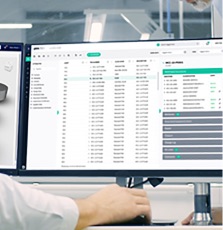



Author: Peter Waywell, Datum360.
The construction industry generates an enormous amount of data. But for data to drive business intelligence, it must be specified, captured, and interpreted accurately. This is why a successful handover strategy is a vital part of a project as it contains information about the critical assets, materials, and equipment for facilities maintenance and operations.
With 70% of owners realizing the value of building information modeling (BIM) post-construction during operations, it’s essential to establish standards at the onset of a project to organize and structure data to achieve actionable insight that drives decision-making. For owners, this means understanding the core principles of data and measuring against those expectations to influence your business.
Today, owners are overwhelmed with copious amounts of data. Typically, this response is borne from tight, over-running schedules and budgets, lack of resources and skills, and a lack of maturity in understanding the value or benefit that information brings to operations. There is no association between the information provided and the information needed.
Handover packages that are not well-documented lead to inefficiencies during operations. On average, engineers spend 40-70% of their time in an operational environment looking for information, which negatively impacts safety, efficiency, and cost.
The key to any successful digitalisation is that the facilities datasets are complete, correct, consistent, and connected. As-built BIM models enable the engineer to confidently get the information they want within seconds and determine what actions to take.
To harness the power of data to drive actionable insight and business intelligence, you need to define what “sufficient” data means and what basic principles need to be applied. This means establishing and understanding what data is valuable and why.
From an owner’s perspective, it requires an understanding of the asset lifecycle and how data – and the different types of data – supports the asset over its lifetime. Ensuring that this data is provided according to your requirements and in a format that enables ease-of-use is critical in driving operational efficiencies.
This is where an “End in Mind” approach to defining data standardization comes into play—understanding what data is needed and when to support and execute key business functions. Equally important is also understanding the maturity of data to support these activities. We frequently see cases where activities are started, but the data’s maturity is insufficient – maintenance planning is an example. The outcome is a poor result that often needs to be repeated, increasing costs and extending schedules.
Being specific about how this information is delivered has implications on how you can readily utilise it. We hear all too often stories relating to data being provided in proprietary formats or silos, resulting in higher handling costs and reducing the potential for delivering integrated data-driven processes.
Knowing what you need, why you need it, when you need it, and in what format become key principles. Once these principles are established, it is then critical that they are managed, measured, and repeated.
Today, data-driven technology exists. This technology is open, flexible, and easy to implement for owners to have more visibility and ownership of their data. Easy in, easy out. This allows owners to assess the quality and completeness of data in real-time to ensure they’re getting what they need at handover.
A Common Data Environment can unlock the value of data to drive better insights into operating capital assets. When data is collected and enriched throughout the project lifecycle, it contains valuable insights for operations and maintenance and future planning, design, and construction. With connected data, owners can clearly define responsibilities and more readily manage the supply chain and broader business functions without disruption.
For example, I want to see all instances within the assets where I have a particular pump installed. For these pumps, what are the technical specifications, the maintenance history, where are they installed across the assets – who installed them and when. This is critical information to understand and plan a replacement programme with a different supplier. This requirement indicates a need for different data types and formats, access to information that resides and is managed within different systems. Having this data available from a single, connected source will result in more efficient decision-making and reduce cost and time when planning a maintenance programme.
The collaboration between Autodesk Construction Solutions and Datum360 directly addresses this approach. Through a combination of our solutions, we deliver a common data environment that drives the specifications and delivers a single-source environment for accessing, creating, and managing the critical data during project delivery and operations.
The value delivered through this collaboration addresses the challenges and provides value for both capital project delivery and operations by:
Aligning a clear information management strategy with industry standards and corporate information requirements is key to driving value from day one. Complete, correct, consistent, and connected data, delivered through a connected data backbone, can drive operational efficiencies that eliminate headaches and allow owners to maintain and operate facilities with ease.
It all starts with:
This blog first appeared on the Autodesk construction blog 'Digital Builder' on 22/03/2021



The Datum360 platform provides effortless delivery of your Engineering Information and Asset Data.